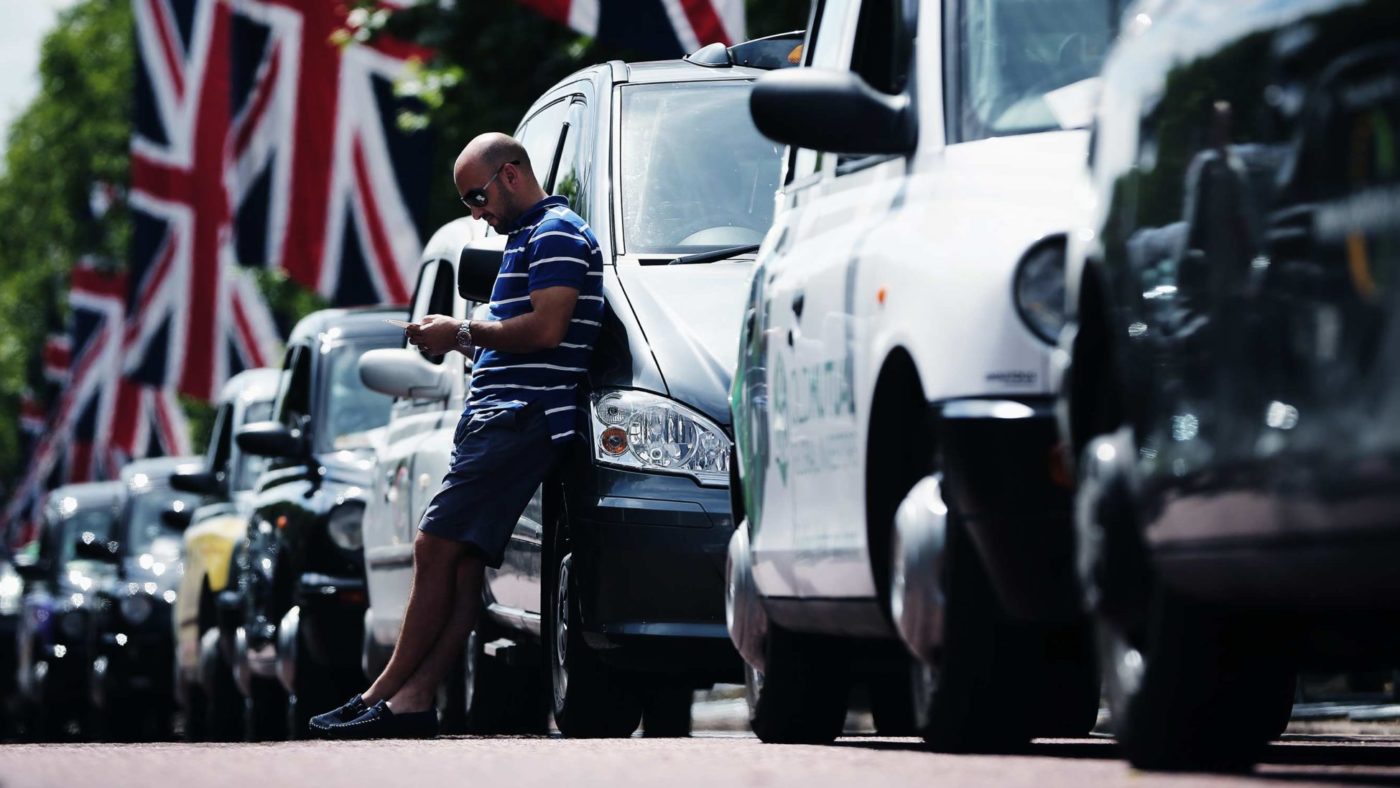Slowly, relentlessly, the left is mobilising against the gig economy. This month, John McDonnell promised to give flexible workers the same rights as employees — thereby undermining the entire model. Meanwhile, Sadiq Khan is loudly demanding the right to clip Uber’s wings by limiting the number of its drivers in London.
On Monday, Khan’s campaign got a shot in the arm when the oddly-named “Task and Finish Group on Taxi and Private Hire Vehicle Licensing”, which was set up by then-transport minister John Hayes to review England’s antiquated cab regulations, issued its final report.
Among the Group’s 34 recommendations is a proposal to allow local licensing authorities to cap the number of taxis and private hire vehicles (PHVs) they license. At present, there are no numerical licence restrictions at all in Greater London. Outside the capital, licensing authorities can cap the number of taxis, but not the number of PHVs. If adopted, the change would give the green light to Khan’s plans for an Uber cap.
Yet the same report also shows why that kind of heavy-handed intervention in the market is such a bad idea – for everyone apart from the incumbent taxi firms.
In justifying this proposal, the report notes that the number of PHVs in England rose by 37 per cent from 2011 to 2017, whereas taxi numbers only increased by 3 per cent. It continues: “Granting licensing authorities the power to cap the number of PHVs could give them an extra tool to help reduce levels of congestion in areas where high numbers of PHVs operate and thereby address in part air quality issues.”
Implementing any such cap would, however, be unwise. For starters, the impact of PHVs on urban congestion remains unclear. As Sam Dumitriu pointed out for CapX last month, one academic study actually found that congestion fell significantly when ride-hailing service Uber entered an urban area.
On the other hand, it is clear that any cap on taxi and PHV licences would lead to fewer opportunities for drivers and – more importantly – a worse deal for passengers. Fewer licensed providers means less competition for customers, which in turn means less choice, higher prices, and a lower quality of service.
What’s more, even if a cap applied to taxis and PHVs alike, the reality is that any limit on numbers would necessarily favour incumbent drivers over upstart competitors and make it nigh-on-impossible for innovative new service providers to enter the market.
This isn’t just a matter of economic theory. The knock-on effects of fewer drivers and higher fares would be very real: more people struggling to find a way home late at night, more people climbing into unlicensed vehicles, and more people getting behind the wheel drunk.
You don’t just have to take my word on this, either, since the Task and Finish Group’s report includes an annex of comments by its members. Among them is Michael Grenfell, executive director of enforcement at the Competition and Markets Authority. He is “not convinced that the case for any kind of cap on numbers has been adequately made out”, and notes that such a cap could “artificially and unnecessarily [constrain] competition, to the detriment of passengers”.
Grenfell stresses the importance of price competition – and hence the affordability of fares – to “millions of ordinary people, and particularly the less affluent”. He also points to the same safety considerations I outlined above: “If people are unable to afford a taxi or cab fare (for example, after an evening out) they may well choose ways of transport that are considerably less safe… endangering themselves and others.”
Indeed, five of the Task and Finish Group’s ten members express reservations about giving local licensing authorities the power to limit taxi and PHV numbers: Anne Main MP is “not convinced that [the proposal] will benefit public safety or competition in the industry”; Saskia Garner of the Suzy Lamplugh Trust worries about “demand outweighing supply, which may put passengers at risk when they are unable to hire a licensed vehicle for their journey”; the National Private Hire and Taxi Association’s Donna Short argues that “supply and demand… must be allowed to continue in the name of fair competition and public safety”; and Steve Wright of the Licensed Private Hire Car Association describes the proposal as “anti-competitive, protectionist, un-environmentally friendly and safety compromising”.
To its credit, the Task and Finish Group’s report openly acknowledges these “potential drawbacks to licence restriction” and suggests that a “public interest test” would have to be satisfied before any cap was introduced. But it is hard to believe that such a test would be robust enough to fend off the various highly-motivated interest groups that are desperate to see ride-hailing services, in particular, curbed. The very possibility of a cap would open the door to a lobbying free-for-all in which consumers are likely to lose out.
More generally, given the amount of dissent from the report’s own contributors, one cannot help wondering why the licence restriction proposal is there at all.
Ultimately, the taxi and PHV licensing system just isn’t the right way to deal with complex issues like congestion – and that remains true even if taxis, minicabs, and ride-hailing apps are shown to be a significant part of the problem. Licensing authorities should be left to focus on their core objectives: checking that vehicles are safe, ensuring that drivers are trustworthy, and investigating any complaints that may emerge.
The rest of us, meanwhile, should think about better, more market-oriented ways to keep traffic moving.


